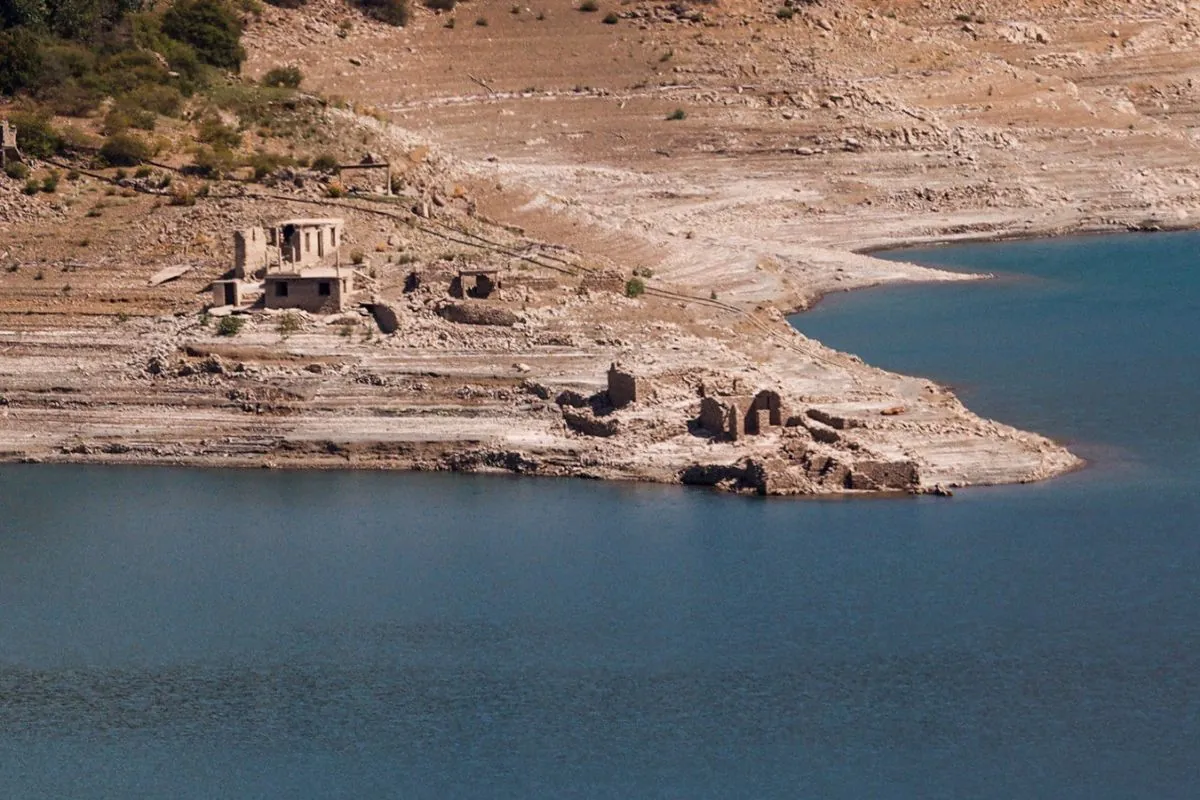In central Greece, the receding waters of Lake Mornos have unveiled a haunting sight: the muddy remnants of Kallio, a village submerged nearly 45 years ago. This artificial lake, created in 1979 by damming the Mornos River, serves as a vital water source for almost half of Greece's population, including the capital Athens.
The lake's dramatic shrinkage is a stark reminder of the ongoing water crisis in the region. Dimitris Giannopoulos, mayor of the Dorida municipality, noted that such low water levels haven't been observed in 33 years. The lake's surface area has diminished from 16.8 square kilometers in August 2022 to a mere 12.0 square kilometers in August 2023, according to satellite imagery from Greece's National Observatory.
This alarming situation is attributed to a combination of factors. Greece experienced its warmest winter on record in 2022-2023, with Mount Giona, which towers over the lake, receiving no snow. The subsequent summer brought punishing heatwaves and prolonged drought across much of the country. These extreme weather events are increasingly linked to climate change, to which Greece's arid Mediterranean climate is particularly susceptible.
The consequences of the shrinking lake extend beyond its immediate vicinity. The Attica region, home to approximately 5 million residents including those in Athens, relies on Lake Mornos as part of its water supply system. Water reserves in the four reservoirs serving this area have plummeted from 1.2 billion cubic meters in 2022 to 700 million cubic meters in August 2023.
Efthymis Lekkas, a professor of disaster management at the University of Athens, warns that this is "an alarm bell." The situation could become dire if the coming winter brings little rainfall. Local impacts are already evident, with wells drying up and surrounding villages experiencing water cuts. The risk of wildfires has also increased as nearby forests become drier.
The exposed ruins of Kallio serve as a poignant symbol of the crisis. Former residents, like 90-year-old Konstantinos Gerodimos, express surprise and sadness at seeing their old village reemerge. His 77-year-old wife, Maria, fears that if the trend continues, the entire village, including their former home and the local church, may become visible.
"If it continues like this, the entire village will appear, all the way to the bottom, where the church and our home was."
As Greece grapples with this water crisis, it faces broader challenges related to climate change. With over 16,000 kilometers of coastline, the country is particularly vulnerable to sea-level rise. The Mediterranean region is considered a "hot spot" for climate change impacts, experiencing more frequent and intense heatwaves in recent years.
The situation at Lake Mornos serves as a stark reminder of the urgent need for adaptive measures and sustainable water management practices. As climate change continues to exacerbate extreme weather events, the balance between water supply and demand becomes increasingly precarious, threatening the livelihoods and well-being of millions.
